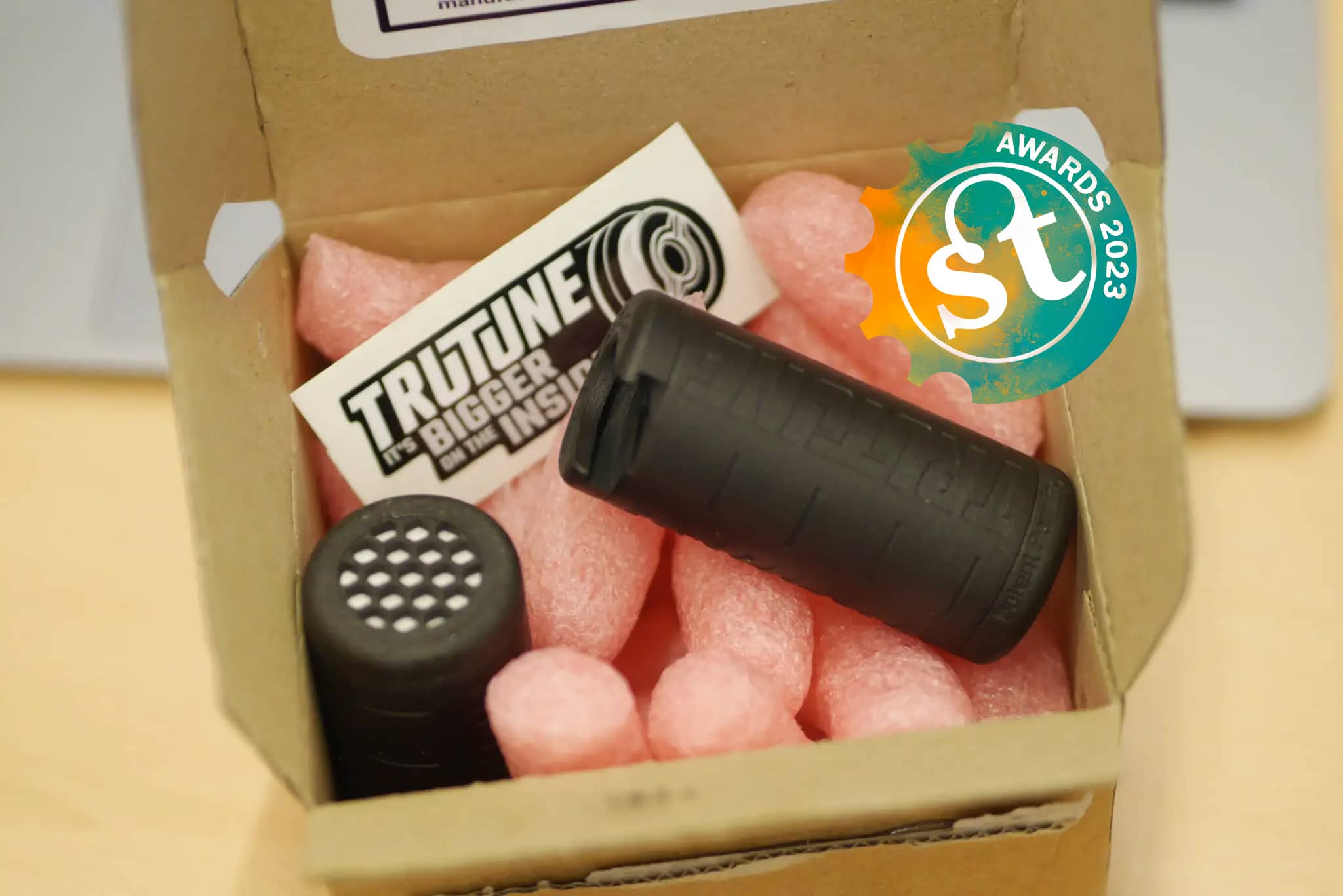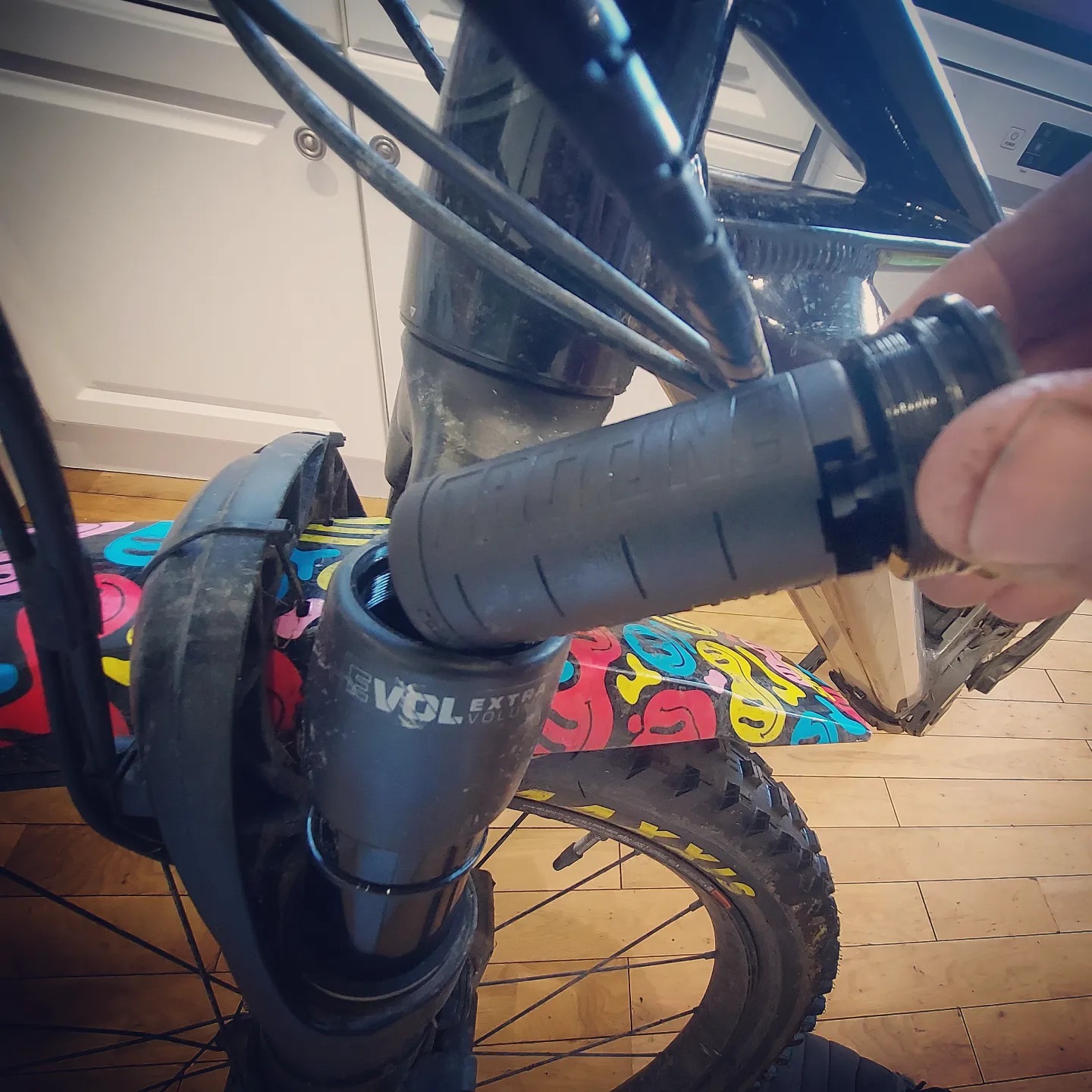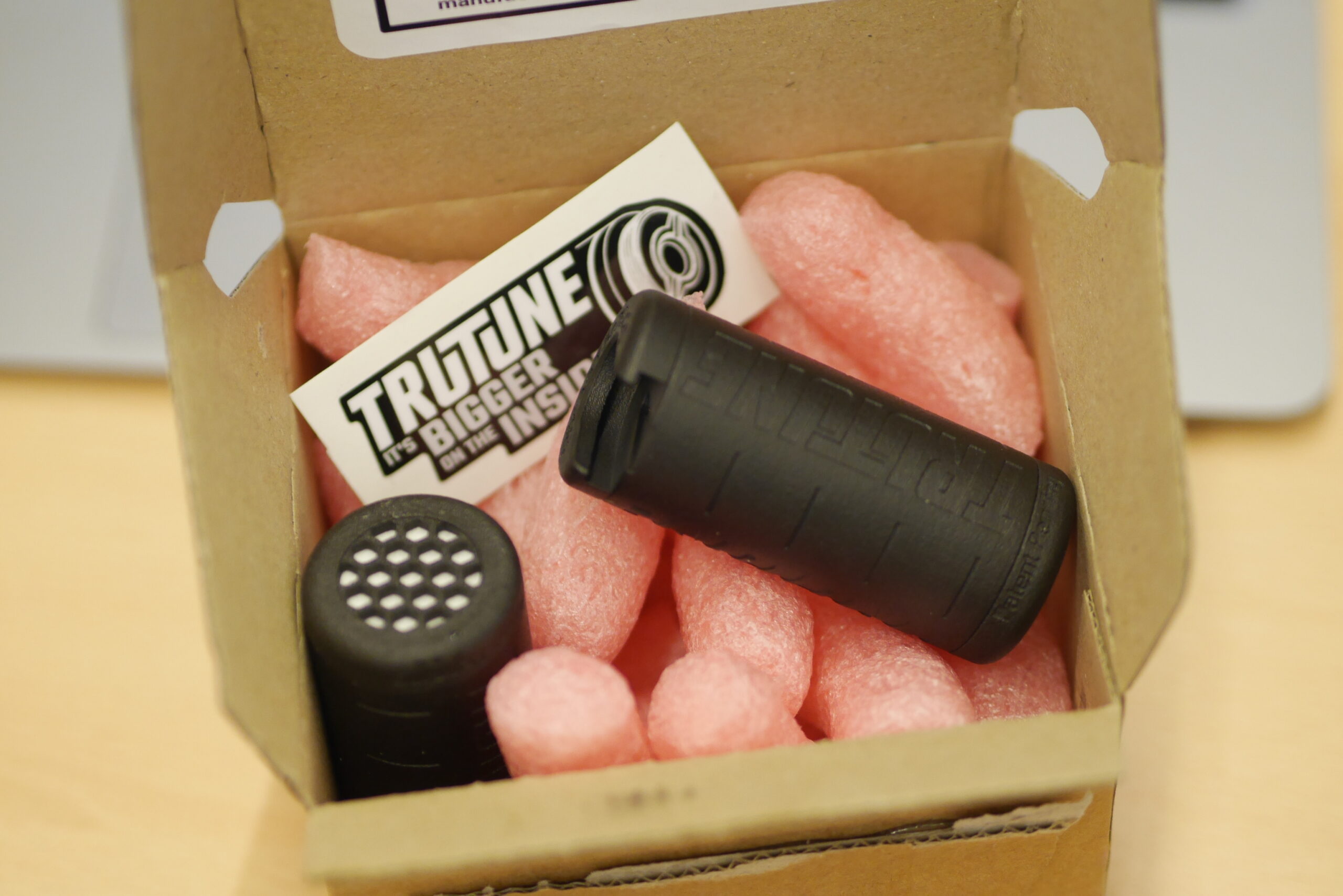The TruTune MTB Air Fork Insert is by far the product that we think pushed the technology or industry forward in a clever or interesting way.
- Brand: TruTune
- Product: MTB Air Fork Insert
- From: TruTune
- Price: £120.00
- Tested: by Benji for 4 months

Here’s our full review from May…
The TruTune MTB Air Fork Insert is not a volume spacer. It’s the opposite in fact. Volume spacers reduce the air volume in your fork’s positive air chamber. The TruTune effectively enlarges it.
Er. How does putting something inside a constrained space make it bigger? I don’t really want to spend ages describing the physics of this. I just want to tell you if and how it all works on the trail.
The single physics paragraph
Air molecules can pack tighter together when on a surface compared to when in empty space. TruTune MTB Air Fork Inserts are stuffed full of surfaces. The surface-tastic material in question is called ‘activated carbon’. A TruTune is a plastic container full of activated carbon. With a TruTune installed you can fit more air (molecules) in your fork compared to without a TruTune in there. That’s all my science bit done. Want more? Read about adsorption.
Does it work?
Yes.
Okay. Review done. Next!
Not really.
Why run a TruTune?
Some riders, such as myself (73kg), have found modern fat stanchioned air forks to be increasingly progressive in spring nature. As negative air chambers have got bigger (to make them more supple at sag) this has the knock-on effect of making them also much more progressive towards end-of-stroke.
In other words, I find it hard to ever get much beyond about 3/4 of fork travel even when running healthy amounts of sag and winding off all the compression damping. In particular, its the 38mm breed of fork (RockShox Zeb, Fox 38 Float) that seem to be excessively rampy for little ol’ un-steezy me.
The TruTune MTB Air Fork Insert makes air forks more linear.
Coil. ish.
The word ‘linear’ will make a lot of people instantly think of coil springs. And yes, in a way, running a TruTune gives you some of the aspects of running a coil.
To cut a longer story short, I think the TruTune gives you the linearity, consistency and improved midstroke of a coil. But it doesn’t give you the pitter-patter super-supple traction-hoovering suppleness of coil.
But at £120 it’s a fair bit cheaper than a new fork or a coil conversion for an existing fork. And it clearly has the advantage of air’s precise pressure adjustment; you aren’t limited to a choice of a handful of coil spring weights. You can dial in the pressure to the exact PSI you want.
You can also still run volume spacers (check that the overall TruTune+spacer length can be accepted by your fork!) which, although we don’t really imagine many people will ever do, it may be useful for fine-tuning the linearity-progressivity feel of the fork.
By the by, TruTune offer the insert in two lengths: normal and short. The short size, somewhat counter-intuitively, is for heavier and/or more aggressive riders. I tried both the regular and the short. The regular was the one that suited me best.
Does it work (slight return)?
All in all, the TruTune MTB Air Fork Insert afforded me the ability to get 38mm forks to work better. No more compromise on having to choose where you can get the fork to work ie. having to choose between small bump or bottom-out or mid–stroke, or choosing between slow-speed support on steeps or high-speed big bump soaking.
I mainly tested the TruTune MTB Air Fork Insert on Fox 38 and Fox 36 forks. The effect on Fox 36 forks wasn’t that noticeable to me. Again, I don’t find 36 forks to be anywhere near as progressive as 38 forks though, so that’s to be expected.
With the TruTuned Fox 38 I could finally have my suspension cake and eat it. No more being restricted to certain areas of the bouncy buffet. Supple-enough sag? Check. Good support once into the stroke? Check. Able to use full-travel when required? Check. No harsh bottom-out? Check. Consistency of action no matter whether on slow speed or high speed terrain? Check.
Quick note about setup, I ended up putting about 10% more PSI into the fork when running the TruTune. This gave me the best balance of plushness, support and full-travel accessibility.
Overall
With the TruTune installed I can finally get modern big negative air chambered fat-legged forks to perform better. It doesn’t give you everything that a coil fork does but it certainly improves things massively. If your bike has a 38mm fork on it that you can’t quite get to do the things you need it to do, a TruTune MTB AIr Fork Insert is totally worth a look.
Join our mailing list to receive Singletrack editorial wisdom directly in your inbox.
Each newsletter is headed up by an exclusive editorial from our team and includes stories and news you don’t want to miss.







